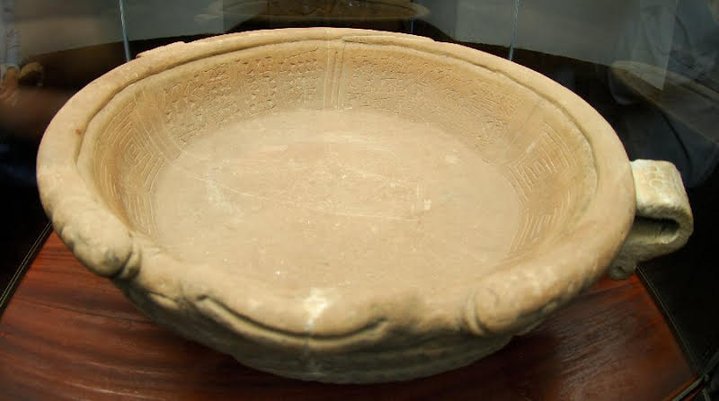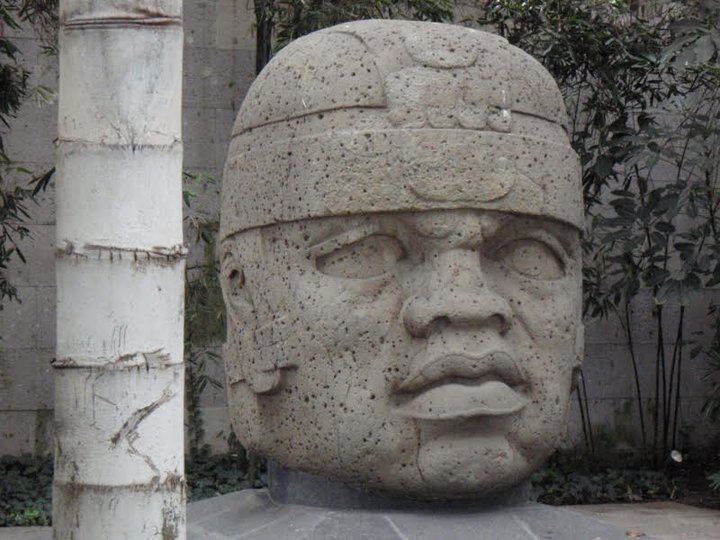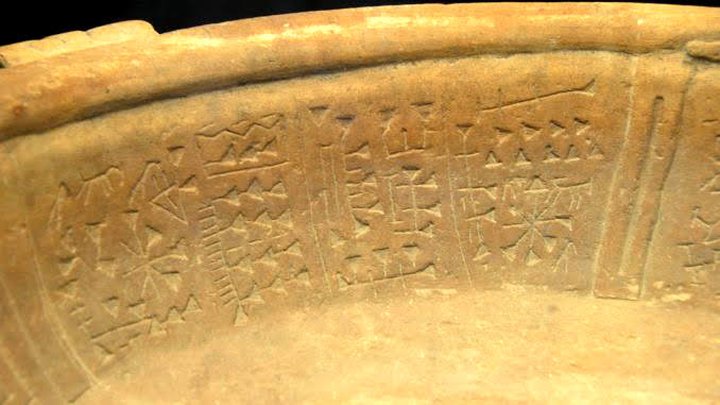“[The Fuente Magna] would be very significant and among the most note-worthy finds of the human past if: 1) it could be dated to a pre-Columbian period; and 2) the writing was genuinely Sumerian.”
-Carl Feagans, professional archeologist
I wrote recently in this slot about the whack-a-mole problem with outrageous claims: a nutter comes up with some crazy story (“UFO lands outside Vegas!”) which, after intensive work, is shown to be false by mainstream investigators—only to be immediately replaced by another, even more wacky assertion (“ETs impregnate casino workers!”). And so it goes, a never-ending problem of disproving wild claims.
At that time, I was dissing the “alkaline water” scam. But, of course, the problem goes way beyond medical miracles, instant weight-loss chicanery and UFOs. Latest to pop up on my radar is yet another attempt to prove ancient, pre-Columbian, visits by Europeans to the Americas, the “Fuente Magna.” This “Rosetta Stone of the Americas” piqued my interest because I occasionally teach a class on the topic of pre-Columbian voyages to the New World, focusing in particular on the short-lived 1000 AD Norse settlement at L’Anse aux Meadows in Newfoundland, the only generally accepted pre-Columbian European contact. In the class, I reference the many (many!) pseudoarcheology artifacts and tales supposed to prove other European connections, including the Maine Penny, the Newport Tower, the Vinland Map, the Piri Reis Map, the Davenport Tablets, Prince Madoc, and the Kensingstone Runestone.

Barry Fell’s “America BC” is one of a slew of fringe archeology books about pre-Columbian voyages to the Americas.
The Fuente Magna (Great Fountain/Source) is a large engraved ceramic bowl supposedly found at Hacienda Chúa on the north side of Lake Titicaca in Bolivia some time in the 1950s. According to an old man who recognized it when shown photos by two Bolivian investigators in 2000, it had been used as a “plato del cancho”—pig feeding bowl—until it was taken to the Museo del Oro in La Paz, where it’s now on display.

The Fuente Magna on display in La Paz. (Unknown photographer)
The “Rosetta Stone” tag results from what some fringe researchers claim are proto-Sumerian (and possibly Phoenician) cuneiform writing on the inside of the bowl dating to about 3000 years ago. One problem is that the chief “translator,” Dr. Clyde Winters, isn’t a mainstream academic and has his own agenda for finding evidence of Sumerians in the pre-Columbian New World. Winters believes that the Olmecs (who pre-dated the Mayans in what is now southeast Mexico) descended from survivors of Atlantis who later lived in Libya. He published his findings about the Fuente Magna in a publication of the “Epigraphic Society,” itself a fringe group—it was established by the late Barry Fell, a brilliant marine biologist who later found his calling trying to prove that various inscriptions on rocks in the Americas were written in Old World scripts. His most famous book is America BC (1976), a rollicking miscellany of alt-history accounts of Egyptians, Lybians, Irish, Phoenicians and Sumerians making regular trips to Pennsylvania, Panama and Peru way, way back when. It’s one of those books that conscientious booksellers have trouble knowing where to shelve it: “history” or “fantasy.”

Olmec giant heads (ten feet tall and up) dating to around 1200 BC resemble African features, according to Clyde Winter and others. (Xalapa Museum of Archeology, Barry Evans)
Back to the Fuente Magna and its many problematic issues:
Even if the bowl is genuine, since it only turns up—without any sense of archeological provenience—in 1950, it could have been brought to Bolivia quite recently.
The markings are supposed to be in proto-Sumerian cuneiform script, but such accepted cuneiform is always written in neat rows, never in the mish-mash of blocks seen on the inside of the bowl.
There’s no way of establishing the age of the bowl, absent any vegetation or soil to carbon-date it or knowing exactly where, and in what strata, it was found.

Detail of inside of bowl showing “proto-Sumerian cuneiform writing” according to some. (Unknown photographer)
(If you’re interested, here’s a link worth reading. And this is the Wikipedia “talk” page discussing reasons for the deletion of the original “Fuente Magna” page on Wikipedia. And this.)
If it were proved genuine—a legitimate ancient middle-Eastern artifact buried in Bolivia for three thousand years or so—it would overturn everything we know about the settlement of the Americas. But such proof is utterly lacking, and the circumstances of discovery and the ambiguous markings make it of little interest to mainstream researchers. So it will probably languish in the Museo del Oro in La Paz (which had some really interesting and beautiful gold figurines and platters when I visited years ago): just an old bowl with a few vague markings, nothing to get too excited over. Too bad. It would have been a great story.
CLICK TO MANAGE